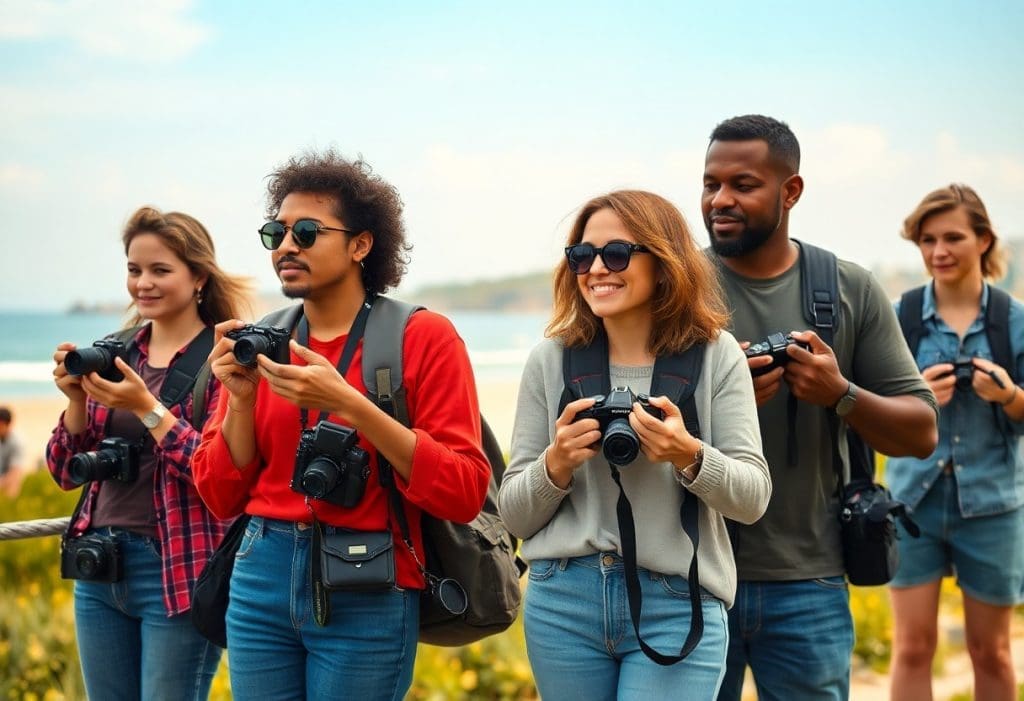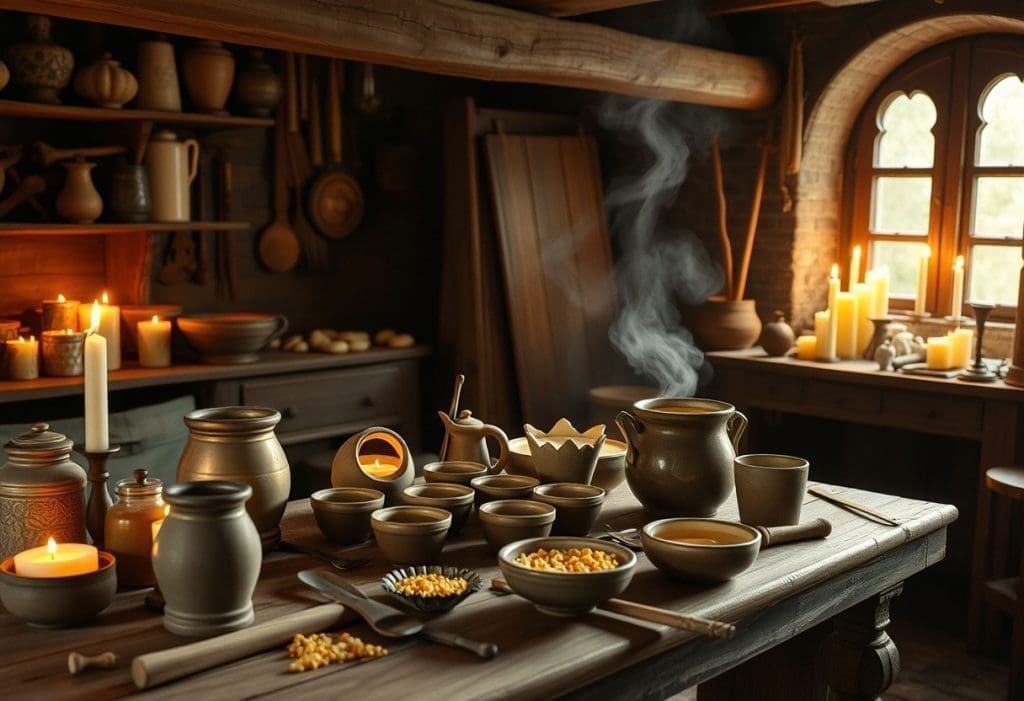This guide is here to walk you through how to get into photography as a hobby.
Whether you’re aiming to capture stunning landscapes or candid moments with friends, photography is a fantastic way to express your creativity and document your life.
You’ll find tips on what equipment to start with, how to develop your skills, and ways to find inspiration.
So, grab your camera and let’s launch on this fun journey together!
How to Get Into Photography as a Hobby
Do you have what it takes to be a great photographer? Start by assessing whether you can cultivate a genuine enthusiasm for capturing moments in time.
Start by observing the world around you, noticing the details, and imagining how they would look through a lens.
You’ll find that photography is not just about taking pictures. It’s about expressing your perspective and sharing your story with others.
And it is about taking a unique angle on something that may otherwise look unremarkable, and making it magnificent.
Choosing Your Camera
Every photographer needs a quality camera, but the multitude of options available can be overwhelming.
Start by considering your budget, how you plan to use your camera, and what features are most important to you.
Whether you go for a smartphone, a point-and-shoot, or a digital single-lens reflex (DSLR), the best camera is one that excites you to shoot.
I’s about the skill behind the lens, not just the device.
Understanding Basic Photography Concepts
Familiarize yourself with concepts such as exposure, aperture, and shutter speed, which work together to create a well-composed photo.
By exploring these fundamentals, you will gain insight into how to manipulate light and composition for stunning shots.
These key concepts form the backbone of photography.
Exposure determines how light or dark an image appears, while aperture controls the amount of light entering the camera and affects depth of field.
Shutter speed dictates how long your camera’s sensor is exposed to light, allowing you to freeze motion or create beautiful motion blur.
Once you grasp these principles, you can start experimenting and finding your unique style!
Tips for Taking Great Photos
Even with a basic camera, you can capture stunning images by following a few simple tips.
Focus on the subject, play with different angles, and experiment with settings.
Here are a few key pointers:
- Always have your lens clean
- Follow the rule of thirds for better composition
- Don’t be afraid to shoot at different times of the day
- Edit your photos to enhance their appeal
Never underestimate the impact of a well-composed shot. It could look like a completely different subject, depending on how you frame it.
Composition Techniques
Use elements like leading lines (how the image directs the eyes of viewers) and framing (what you do and don’t include in the field of view for the camera) to guide the viewer’s eye to your subject.
Explore different perspectives by shooting from high or low angles, and pay attention to negative space which can create a sense of balance.
Before you press the shutter, think about how all these elements work together.
Lighting Tips
Any photographer knows that natural light is your best friend.
To maximize the impact of your your photos, consider the following lighting tips:
- Shoot during golden hours (just before sunrise or after sunset) for softer, warmer light
- Avoid harsh midday sun that casts unwanted shadows
- Experiment with backlighting for a dramatic effect
- Try using reflectors to bounce light onto your subject
If you are able to master lighting, you can transform an ordinary photo into an extraordinary one.
Natural light changes throughout the day. If you can’t get a shot right, perhaps try again at another time.
In shaded areas, you can capture more even light which helps avoid overexposed highlights.
Feel free to experiment with indoor lighting, too! It can add creative flair to your images.
Pay attention to your surroundings, because they can offer unique lighting scenarios that inspire stunning photographs.
Exploring Different Photography Styles
Any good photographer will want to at least try out multiple styles of photography.
Each style offers unique opportunities to express your creativity and connect with the world around you.
Whether you find yourself drawn to portrait photography, landscape photography, or something entirely different, you can discover what speaks to you the most and hone your skills along the way.
Portrait Photography
There’s something magical about capturing the essence of a person through portrait photography.
Through portraits, you can explore emotions, personalities, and stories, making it an intimate and fulfilling experience.
You should also experiment with different lighting, backgrounds, and poses. This is how you can bring out the unique traits of your subjects, regardless of whether they are close friends or strangers.
Landscape Photography
Landscape photography is an exciting way to connect with nature. You have the freedom to explore different environments, from mountains to beaches, and capture their beauty in your unique style.
This genre not only showcases your artistic vision but also allows you to spend time outdoors, creating a refreshing balance.
Keep in mind that landscape photography involves more than just snapping photos of pretty places.
It’s about noticing the shifting light, the changing seasons, and how various elements in the frame work together.
Editing Your Photos
Taking a picture isn’t the end of the process. Most photographers these days will edit the final version to get it just right.
Editing is where you enhance your images and express your creative vision.
Explore different editing software options, and don’t be afraid to experiment with filters, cropping, and color adjustments.
Editing can transform an average shot into a stunning visual, making it a valuable skill in your photography toolbox.
Recommended Editing Software
If you’re just starting out, some great editing software options include Adobe Lightroom, Snapseed, and GIMP.
These tools cater to various skill levels, so you can choose one that feels comfortable to you.
Some of them even offer tutorials to help you get acclimated, making your editing process enjoyable and easy!
Basic Editing Techniques
You’ll want to start by adjusting brightness and contrast, cropping for better composition, and tweaking colors to enhance vibrancy.
You can also play with saturation and hue to add depth to your colors.
These simple steps can significantly improve your images and reflect your artistic style.
Basic editing techniques focus on enhancing your images without overwhelming them.
Experiment with these edits until you find a style that resonates with you. Your photos will thank you for the extra attention!
Sharing Your Work
Not only does sharing your photography allow you to showcase your creativity, but it also enables you to connect with others who share your passion.
By displaying your work, you invite feedback, encouragement, and inspiration from fellow enthusiasts.
This social aspect can help you grow as a photographer while building a supportive network.
Online Platforms for Photography
Websites like Instagram, Flickr, Pexels, and 500px offer platforms where you can post your photos, engage with other photographers, and gain visibility for your unique style.
Photography Communities
With so many photography communities out there, you have a fantastic opportunity to immerse yourself in a supportive environment.
By participating in these groups, you will be able to share your work, seek advice, and learn from others.
Work with various platforms, both online and local, to find photographers who can provide feedback and support.
You can also join clubs and attend photo walks to connect with other individuals who share your interest.
Engage in discussions, workshops, and competitions within these communities. All of these activities will help boost your confidence and skillset while creating lasting friendships.
Factors to Consider as You Grow
Once you’ve dipped your toes into the photography waters, you’ll need to dial in your approach. Consider these factors:
- Your evolving style
- The equipment you choose
- Your preferred subjects
- Opportunities for collaboration
- Continuous learning and improvement
This process is about artistic expression and growth. As you evolve, your approach likely will as well. Enjoy the process!
Setting Goals for Your Photography
If you want to propel your photography forward, start by setting clear, achievable goals early.
This might include mastering specific techniques, participating in exhibitions, or completing a personal project.
By outlining what you want to achieve, you can focus your efforts and track your progress more effectively.
Staying Inspired
With photography, inspiration can sometimes wane, but there are ways to reignite your passion.
Engage in activities that feed your creativity, like visiting art galleries, reading photography books, or joining local photography groups.
Keep an open mind about different genres and experiment widely.
Factors that contribute to staying inspired include seeking out nature, exploring new locations, or collaborating with other creatives.
Attend workshops or online classes to learn fresh techniques, and don’t hesitate to draw inspiration from your favorite photographers’ work.
You never know when a simple change of scenery can rejuvenate your perspective and spark new ideas!
And That’s How to Get into Photography as a Hobby
Photography is all about exploring your creativity and enjoying the world through your lens.
Start by choosing a camera that suits your style, whether it’s a smartphone or a DSLR, and practice taking photos of subjects that inspire you.
Experiment with different techniques, learn from others, and don’t shy away from making mistakes.
Join local photography groups or online communities to share your work and gain insights.
Above all, have fun and let your passion shine as you capture moments that reflect your unique perspective!



